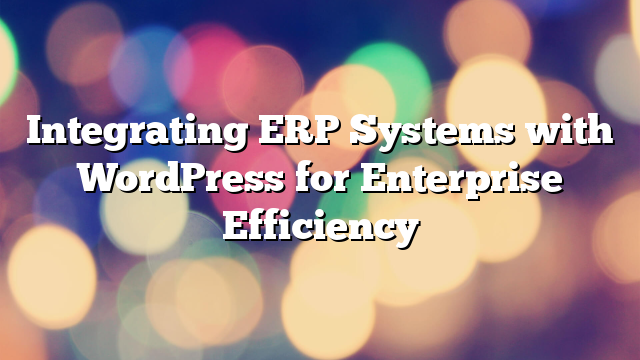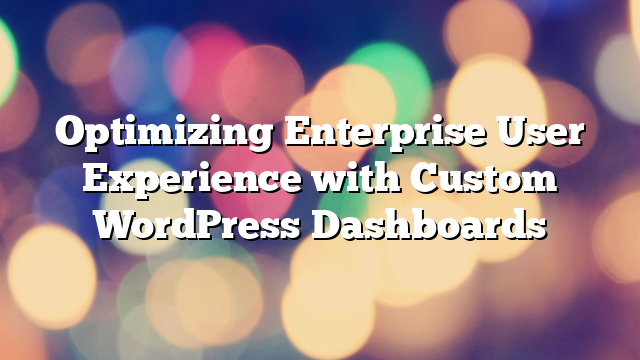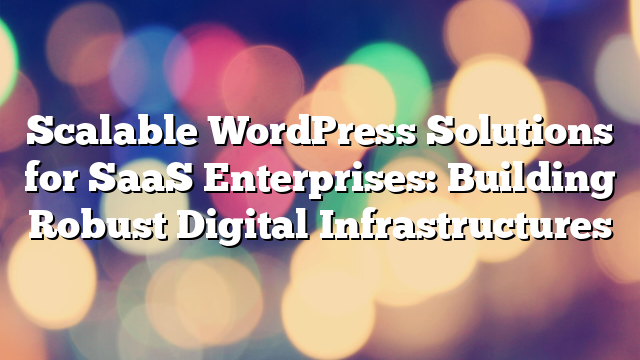Headless WordPress and Composable Architecture in the Age of Digital Agility
21.05.2025

In the fast-paced digital economy, agility, speed, and flexibility are no longer optional—they’re mission-critical. Enterprises are increasingly adopting composable architecture to future-proof their digital platforms. At the heart of this shift is Headless WordPress, a robust and scalable solution that separates content management from front-end delivery. This article explores how Headless WordPress fits into composable strategies and why it’s essential for modern enterprises.
What Is Composable Architecture?
Composable architecture refers to building systems using interchangeable and modular components—often via APIs—allowing organizations to assemble a digital ecosystem tailored precisely to their needs. Rather than being locked into a monolithic platform, enterprises use a suite of best-of-breed solutions for each function (CMS, search, commerce, analytics, etc.).
Why Headless WordPress?
WordPress, traditionally a monolithic CMS, becomes headless when decoupled from its default front end. In this model, WordPress handles content management, while a separate technology (e.g., React, Vue, Next.js) handles the presentation layer through REST or GraphQL APIs. This architecture gives enterprises full control over the user experience, performance, and delivery channel.
Vipe Studio specializes in implementing Headless WordPress for enterprises seeking flexibility without sacrificing reliability.
Benefits of Headless WordPress in a Composable Setup
- Omnichannel Publishing: Deliver content across web, mobile, IoT, kiosks, and other digital interfaces from a single CMS.
- Faster Front-End Performance: Use modern JavaScript frameworks to build blazing-fast, SEO-optimized user interfaces.
- Greater Development Flexibility: Front-end and back-end teams work independently, improving time-to-market and parallel development.
- Security Advantage: With no PHP exposed on the front-end, attack vectors decrease significantly.
Real-World Enterprise Use Cases
Leading global brands are already using Headless WordPress to power their digital ecosystems:
- Media Portals: Serve millions of visitors daily with lightning-fast content delivery.
- eCommerce Platforms: Combine WordPress content with headless commerce platforms like Shopify or BigCommerce.
- Corporate Intranets: Deliver personalized dashboards through React or Angular while managing content centrally.
Key Components in a Composable Stack
A successful composable setup might include:
- Headless CMS: WordPress with REST/GraphQL API
- Front-End Framework: Next.js, Nuxt, or Gatsby
- Commerce Layer: Shopify, WooCommerce (API), or Commercetools
- Search: Algolia or ElasticSearch
- Personalization & A/B Testing: VWO, Optimizely, or Google Optimize
Implementation Considerations
Before transitioning to a headless and composable setup, enterprises should consider:
- API Readiness: Ensure your current stack supports clean API access.
- Internal Development Skills: JavaScript front-end expertise is a must.
- Infrastructure: Opt for scalable hosting environments like Vercel, Netlify, or containerized cloud services.
Unlock Digital Agility with Vipe Studio
Composable architecture powered by Headless WordPress isn’t just a trend—it’s a transformative strategy for enterprise growth. At Vipe Studio, we help businesses adopt this new paradigm with tailored implementations that match their business goals.
Contact us today and build a flexible, future-proof digital foundation with Headless WordPress and composable architecture.



